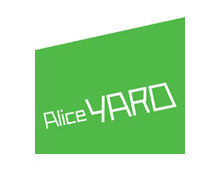Making it up
Judy Raymond, Caribbean Beat editor and sometime CRB contributor, on Jean Rhys and the "personal art" of make-up.
At university, fascinated by theatre but too timid to act, I did stage make-up. I plunged in at the deep end, turning undergraduates into pensioners, making them up to play in a musical about death that was set in an old people’s home. It was called The Dark, it was as bad as it sounds, and I don’t think it even ran for the full week at the Oxford Playhouse. But it taught me to work with greasepaint and do wrinkles. Later I learned kabuki make-up, for a production of West Side Story; and I grappled with artificial hair to give Dogberry a fearsome set of mutton-chop whiskers in a Victorian-style production of Much Ado About Nothing, staged in Trinity Gardens.
You give a 20-year-old wrinkles by using a blend of dark brown and crimson lake greasepaint sticks, mixing it on the back of your hand and applying it, swiftly, in as few strokes as possible, with a paintbrush. To make them realistic, you tell the actor to smile or frown, and the natural fold lines of those expressions will remain a few seconds after, long enough to trace them firmly with your brush. Those faint creases are where their real wrinkles will form, sneakily, over the years.
The dress rehearsals were the best: that was the first time you did the make-up, and it was a huge boost to the teenage cast’s confidence when they were suddenly made to look the part of the middle-aged tyrant or the bumbling constable they were required to impersonate.
That was when I first started wearing make-up seriously--except that it wasn’t entirely serious, because there’s always an element of play in it: who shall I be today? How would I look with lizard-green lids, or scarlet lips? It was more fun then, in the 80s, when you could paint on goth eyes with heavy kohl liner and charcoal eyeshadow, or venture out in green eyeliner and blue-and-silver eyelids . . . and have them much admired.
Nowadays, though, wearing too much make-up would make me look both older and less grown-up. Slap, the English call it. I wouldn’t want to look like an old slapper. But I still wouldn’t leave the house without it, out of an unsavoury, neurotic mix of vanity and its opposite. Even if I’m just buying milk at Hi-Lo, in my uniform of white t-shirt and jeans, my eyeshadow (a smudge of taupe) comes too.
Putting on make-up is still a form of playing dress-up, though my disguises now have to be more subtle. The ideal now, in this day and my age, is to look as if you’re naturally lovely but just happen to be wearing a touch of make-up, and not like a mistress of that most frivolous art.
Because, like fashion, it’s not considered a real art. Make-up is superficial, ephemeral, in the most literal sense. So I felt guilty when I arrived home the other day with not one but three new lipsticks. I’m appalled, honestly, to find I now own 27 (just did a spot of research there). That isn’t rational. This is an addiction, though a minor one.
But it also happened partly because I’m still in search of the perfect pink: not as deep as rose, as bright as bubblegum, or as inconspicuous as nude (you see the difficulty). One of the new ones has turned out to be a bright coral, which I’ll probably never wear, except for some special effect, like the creamy matt pale pink one I only use for a 60s look, with no blusher, ivory eyelids, and lots of black liquid eyeliner.
. . . But I digress. One of the reasons make-up is thought frivolous, and frowned upon by certain varieties of feminist, is because it’s thought to be for the viewing pleasure of men. Well, up to a point. Yes, women are seen, looked at as objects in ways that men are not--not necessarily sexual objects, though, but aesthetic ones. And self-adornment by people of both sexes may be the oldest of the applied arts. The hard truth, too, is that looks matter, and beauty, and the human concern with beauty, were not invented by men.
If you’re the sort of person who’s interested in the other arts, who cares about books and music and paintings and the look of the space you live in, it’s a logical extension of that concern to practise a personal art, with yourself as a canvas. Indeed, make-up is a most perfect form of self-expression, with yourself as not only the artist, but also both the subject and the object of your art. (Take it a little further and you become Cindy Sherman.)
Make-up improves on what nature gave you, and thus makes you look more like your real self. And yet the face you paint on is also a mask; which may be not only a disguise, but also a form of protection.
I think of the poignant photos of Jean Rhys as a very old woman, so obviously desperately sad, so carefully made up, and still beautiful.
She too would have learned about make-up in the theatre, when after leaving school she tried to be an actress. She became a chorus girl, but she was always terrified of the audience, and soon gave up the stage.
But in the dazzle of the naked bulbs that ringed the dressing-room mirrors, Rhys had discovered the uses of make-up. You come out of the cold outside world into the shabby intimacy of backstage, where with the rest of the cast you conspire to deceive the audience. Behind the bogus backdrops of the set, between the bare walls and harsh lights, you put on a new identity, in borrowed clothes and, thinner but more effective, a layer of greasepaint that covers the fear.
In those days nice girls didn’t paint, but in any case Rhys soon slipped below the threshold of respectability. A lover recorded in 1915 that she spent hours in front of a mirror, “combing out her lovely hair and playing with a make-up box filled with a variety of unguents, powders and lipsticks.”
She was 25 then, and didn’t need it to make her beautiful. She shouldn’t have needed it at 80. But this is how the novelist David Plante draws her in old age, in a picture as careful as it is cruel.
“Her make-up was hit-and-miss,” he writes. “There were patches of thick beige powder on her jaw and on the side of her nose, her lipstick was as much around her lips as on them, the marks of the eye-pencil criss-crossed her lids, so I thought she might easily have jabbed it in her eyes.”
By then, at last, Rhys was being feted as a great writer, thanks to her last and best novel, Wide Sargasso Sea. She had money to extend and heat her tiny cottage, to pay for nice clothes and trips to see new friends in London (among them Lady Antonia Fraser, also a writer and a beauty who took pleasure in that beauty). Why would Rhys feel the need to daub herself in this clumsy way, so that Plante could portray her as a clown?
Because she had so much to hide, although she revealed so much of herself in her fiction. Crippled by childhood wounds, Rhys had never learned the skills to cope with life. Very early on, she’d been afflicted by a profound loneliness that lasted through three marriages. She’d outlived three husbands, failed as a mother, endured poverty for decades. She met with success as a writer when she was an old woman, too late to enjoy it.
Her beauty was a shield and a consolation, though it didn’t make her life easier in any material way. Restored by make-up, it gave her a way to face the world.
--JR
.
Dear readers: For our sixth anniversary in May 2010, The Caribbean Review of Books has launched a new website at www.caribbeanreviewofbooks.com. Antilles has now moved to www.caribbeanreviewofbooks.com/antilles — please update your bookmarks and RSS feed. If you link to Antilles from your own blog or website, please update that too!
Dear readers: For our sixth anniversary in May 2010, The Caribbean Review of Books has launched a new website at www.caribbeanreviewofbooks.com. Antilles has now moved to www.caribbeanreviewofbooks.com/antilles — please update your bookmarks and RSS feed. If you link to Antilles from your own blog or website, please update that too!
Friday, 8 June 2007
Subscribe to:
Post Comments (Atom)








1 comment:
brilliant! being a current struggler with the perils of foundation and shine proof powder, I can identify...
Post a Comment